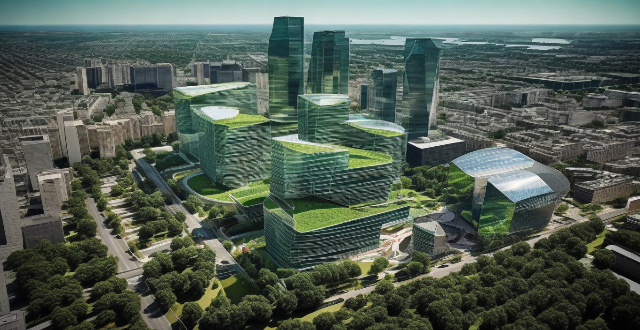Green technologies play a crucial role in promoting energy conservation within buildings. They aim to reduce the negative impact of human activities on the environment and promote sustainable development. The significance of using green technologies in buildings for energy conservation includes improving energy efficiency, reducing carbon emissions, promoting renewable energy use, enhancing natural resource management, improving indoor air quality and noise reduction, reducing operating costs, and increasing property value. As we strive towards a more sustainable future, adopting these technologies becomes increasingly important.

The Significance of Using Green Technologies in Buildings for Energy Conservation
Introduction
Green technologies play a crucial role in promoting energy conservation within buildings. These technologies aim to reduce the negative impact of human activities on the environment and promote sustainable development. This article will discuss the significance of using green technologies in buildings for energy conservation.
Energy Efficiency
Reducing Energy Consumption
The most direct benefit of green technologies is reducing energy consumption. By using energy-efficient equipment, such as LED lights and efficient HVAC systems, buildings can significantly reduce their energy usage.
Lowering Carbon Emissions
Reducing energy consumption also leads to lower carbon emissions. This helps combat climate change by reducing greenhouse gas emissions from buildings.
Sustainable Development
Promoting Renewable Energy Use
Green technologies encourage the use of renewable energy sources, such as solar and wind power. This reduces reliance on non-renewable resources and promotes sustainable development.
Enhancing Natural Resource Management
Green technologies also promote responsible management of natural resources. For example, rainwater harvesting systems collect and reuse rainwater, reducing demand for potable water.
Health and Comfort
Indoor Air Quality Improvement
Green technologies can improve indoor air quality by using materials with low pollutant emissions and enhancing ventilation systems. This creates a healthier living environment for building occupants.
Noise Reduction
Using sound-absorbing materials and advanced noise control technologies can reduce noise levels in buildings, improving comfort for occupants.
Economic Benefits
Reducing Operating Costs
By reducing energy consumption, green technologies can lower operating costs for building owners and users. This makes buildings more economically viable in the long term.
Increasing Property Value
Buildings incorporating green technologies often have higher property values due to their environmental benefits and reduced operating costs.
Conclusion
In conclusion, using green technologies in buildings for energy conservation has significant benefits, including improved energy efficiency, sustainable development, health and comfort enhancements, and economic advantages. As we strive towards a more sustainable future, adopting these technologies becomes increasingly important.